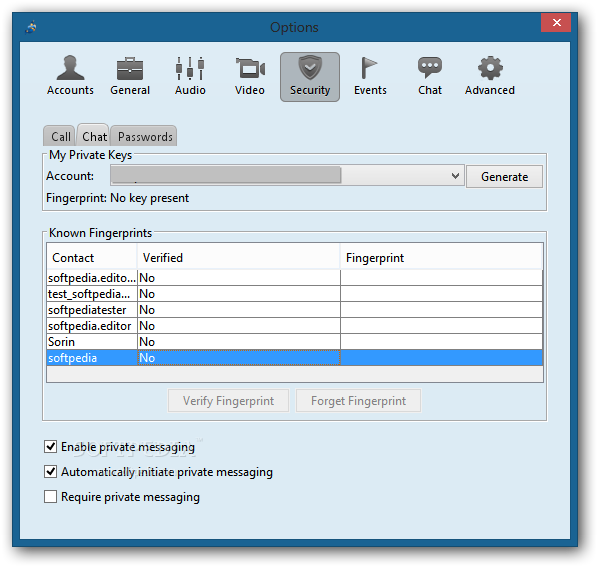
- #JITSI SIP CLIENT MAC OS X#
- #JITSI SIP CLIENT FULL#
- #JITSI SIP CLIENT SOFTWARE#
- #JITSI SIP CLIENT CODE#
You can then specify what the DNSSEC-related behavior is for individual domains. Ingo also indicated that the table at the bottom of the Preferences panel will fill up with domains as you start to connect to sites (any sites – DNSSEC-signed or not). I’ll be able to perform the DNSSEC resolution without any issues. In my own case, I’m running a local instance of DNSSEC-Trigger and that is my operating systems default resolver.

The choice not to use libunbound as a fully recursive resolver was performance and that it’s for one simply not the job of an application to perform recursive DNS queries. The option to override the OS’s default resolver is there because during development, the only servers supporting all relevant record types were from DNS-OARC and Verisign. are sent to the OS’s resolver, or if configured, to the “Custom name servers”.
#JITSI SIP CLIENT FULL#
Libunbound, the library Jitsi is using, is validating the DNSSEC chain, but it’s not a full resolver. If the “” domain is signed via DNSSEC, including all the SRV records, then the VoIP client can validate that the SRV records are in fact correct and the connection can be made knowing that it is to the intended recipient based on the SIP address.įrom a configuration point of view, there has been one more screen added to Jitsi’s preferences:Īt this moment there is no documentation on the Jitsi site about the DNSSEC features (they are working on it… and open to any offers of assistance! -), but I asked Ingo Bauersachs about the configuration of the resolver. What if she is trying to call her bank and an attacker is redirecting her to another SIP server where there is a similar call center or IVR? (Okay, leaving aside the fact that at this moment you may not be able to make SIP connections to many banks… but that is changing slowly.)
#JITSI SIP CLIENT SOFTWARE#
Alice’s SIP software will then connect to those IP addresses to send the appropriate SIP INVITE to start a conversation with Bob.īut how does Alice’s software know that the SRV records retrieved from DNS are correct? How can it know that they were not tampered with?

These records will provide the IP address(es) of the SIP server on Bob’s side. To step back and explain a bit further, if Alice wants to call Bob (to be cliche), and she knows his SIP address is “sip: ”, her SIP client, IP-PBX or other SIP server (depending upon configuration) is going to perform a DNS lookup on “” to retrieve the relevant SRV records.
#JITSI SIP CLIENT CODE#
The DNSSEC code itself was implemented by Ingo Bauersachs from this university.Įssentially what Jitsi now does if you enable DNSSEC is to validate the signing of the SRV records in DNS that provide the address information for the remote end of the SIP or XMPP connection. Jitsi has supported SIP and XMPP over IPv6 for quite some time now, but with this new release adds support of DNSSEC courtesy, I learned, of some funding from the NLnet Foundation and the University of Applied Sciences and Arts Northwestern Switzerland (FHNW). It’s also free and the source code is all available. It works with the SIP (Session Initiation Protocol) and XMPP (Jabber) protocols and connects to common services like GoogleTalk, AIM, Yahoo!Messenger, Facebook chat, etc. Jitsi has a great range of features including support for voice and video calls, chat/IM, desktop sharing, conference calls, wideband audio and much more.


#JITSI SIP CLIENT MAC OS X#
Jitsi, formerly known as the “SIP Communicator”, is available for Windows, Mac OS X or Linux from: With it’s 1.0 release last week, the Jitsi soft phone became the first VoIP client I know of to support DNSSEC.


 0 kommentar(er)
0 kommentar(er)
